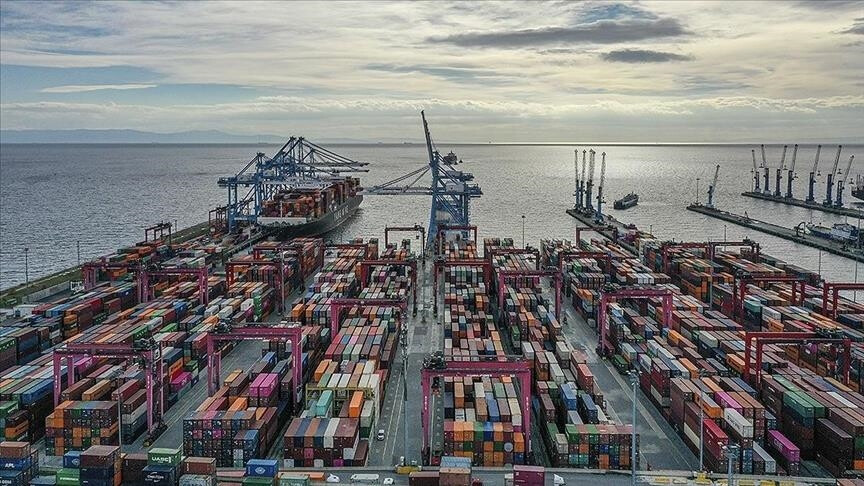
U.S. President Donald Trump's announcement on Wednesday of reciprocal tariffs is projected to impact eight of the United States' top ten trading partners, with China and Vietnam facing the most significant repercussions.
According to data from the International Trade Centre, President Trump's differentiated tariff imposition will apply to the top ten U.S. import partners: Mexico, China, Canada, Germany, Japan, Vietnam, South Korea, Taiwan, Ireland, and India.
While Mexico and Canada have been spared new tariffs, Vietnam has emerged as one of the hardest-hit nations among the U.S.'s leading trade partners, facing a substantial reciprocal tariff rate of 46%.
In 2024, the trade volume between Vietnam and the United States reached $142.5 billion, with the U.S. accounting for 27% of Vietnam's total exports. This significant reliance on the American market leaves Vietnam particularly vulnerable to the newly imposed tariffs.
China, with a staggering $462.5 billion in trade with the U.S. last year, will face a 34% reciprocal tariff. As major manufacturing hubs in Asia, both China and Vietnam will likely see markets closely scrutinizing their future manufacturing activities and growth indicators in the wake of this tariff decision.
The European Union (EU) will be subject to a 20% reciprocal tariff, with key trading partners Germany and Ireland included in the levy. In 2024, Germany was the U.S.'s fourth-largest source of imports, with a trade volume of $163.5 billion, representing 5.87% of total U.S. imports. Ireland, the ninth-largest import partner, had a trade volume of $103.8 billion, accounting for 3.09% of U.S. imports. The potential impact of these reciprocal tariffs on European manufacturing activity raises concerns, especially given the existing risks of an EU economic slowdown. Economic observers are keenly watching not only the shifts in U.S.-EU trade volumes but also the potential for retaliatory measures from the EU.
Japan, the United States' fifth-largest import partner in 2024, will also be subject to President Trump's reciprocal tariffs, facing a rate of 24%. The Nikkei 225 index, which had already declined by 4.14% in March, experienced a further drop of 2.7% in Asian markets following this announcement, marking the most significant decline among the region's major indices.
South Korea, India, and Taiwan will face reciprocal tariffs of 25%, 26%, and 32%, respectively. Notably, the tariffs imposed on Taiwan, a global semiconductor hub, have already led to substantial losses for major U.S. semiconductor companies such as Nvidia, AMD, Broadcom, and Arm Holdings. Following the announcement of tariffs on Taiwan, Nvidia's stock price plummeted by 7.8%, AMD by 8.9%, Broadcom by 10.5%, and Arm Holdings by 9.64%. This underscores the interconnectedness of the global technology supply chain and the potential for cascading effects from these tariffs.
President Trump's latest reciprocal tariff move can be interpreted as a continuation of his "America First" economic policy. Throughout his previous term, he imposed high tariffs on China and other nations, citing the need to address trade imbalances and protect American manufacturing. This new measure appears to be a further intensification of this policy stance.
In-depth Analysis of Impact on China and Vietnam:
China: As the United States' largest trading partner, China has already been subject to significant tariff impositions during the previous Trump administration. The additional 34% reciprocal tariff is expected to further weaken the competitiveness of Chinese exports to the U.S., potentially leading to decreased production and job losses in affected industries. Coupled with existing U.S. restrictions in advanced technology sectors, this could also negatively impact China's efforts towards technological self-reliance. Moreover, some analysts suggest that these tariffs could incentivize U.S. companies to further diversify their supply chains away from China, accelerating a trend that has been ongoing.
Vietnam: Having benefited in recent years from the U.S.-China trade tensions by increasing its share in the U.S. import market, Vietnam is poised to experience a significant shock from these high reciprocal tariffs. The price competitiveness of Vietnam's manufacturing sector, built upon lower labor costs, could be undermined, leading to difficulties in exporting to the U.S. This could consequently result in a slowdown in Vietnam's economic growth, which has been heavily reliant on export-oriented manufacturing. The relatively high tariff rate of 46% underscores the particular concern the U.S. has regarding the trade balance with Vietnam.
Impact on Other Nations and Industries:
Japan: As a major producer of automobiles and electronics – key import items for the U.S. – Japan will likely face reduced export competitiveness due to the 24% tariff. Despite the weakening yen, the higher tariff barriers may necessitate a revision of market strategies for Japanese companies operating in the U.S. Some Japanese automakers with significant production facilities in the U.S. might be less affected than those primarily relying on exports.
South Korea: With a diverse range of exports to the U.S., including semiconductors, automobiles, and electronics, South Korea is also expected to experience negative consequences from the 25% tariff. In the context of ongoing global supply chain restructuring, the strengthening of U.S. protectionism could increase business uncertainty for Korean companies. The impact on specific sectors will depend on the price elasticity of demand for Korean goods in the U.S. market and the ability of Korean firms to absorb the tariff costs or pass them on to consumers.
Taiwan: The imposition of a 32% tariff on Taiwan, home to the world's largest contract chip manufacturer, TSMC, and a critical player in the global semiconductor supply chain, could trigger significant disruptions. Combined with the U.S.'s push to increase domestic semiconductor production, Taiwanese semiconductor companies may face an increasingly challenging competitive environment. The stock market reactions of major U.S. chip companies highlight the deep interdependence within the semiconductor industry and the potential for these tariffs to ripple through the sector globally.
Future Outlook and Challenges:
President Trump's reciprocal tariff measures have raised concerns about further destabilizing the global trade order and potentially triggering a wave of protectionist policies in other nations. The possibility of retaliatory tariffs from the U.S.'s major trading partners cannot be ruled out, increasing the likelihood of escalating global trade tensions.
Governments and businesses worldwide will need to carefully analyze the implications of these tariffs and develop multifaceted response strategies, including supply chain diversification and the exploration of alternative export markets. Experts emphasize the continued importance of pursuing multilateral trade negotiations to reduce trade barriers and foster a more stable international economic environment. The long-term effects of these tariffs on global economic growth and inflation remain a significant concern for policymakers and economists alike.
[Copyright (c) Global Economic Times. All Rights Reserved.]






























